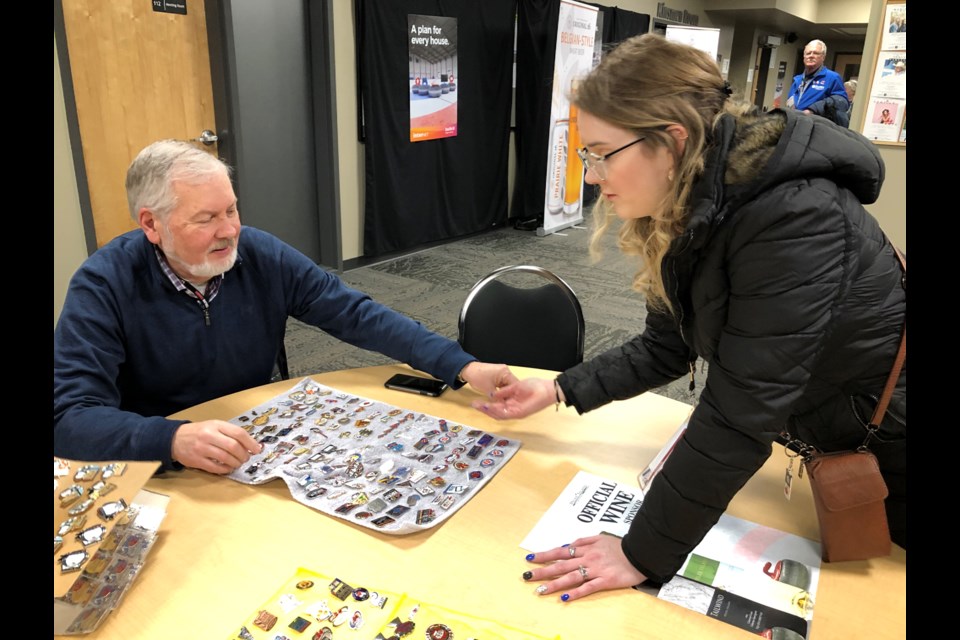Some people collect stamps and some collect hockey cards, but if you’re a curling fan, you know that the tradition is to collect — and trade — pins from the events you attend.
Reginans Edd Wisniewski and Rob Dewhirst brought their collection to this year’s Scotties Tournament of Hearts, displaying their assortment of pins in the hallway outside the HeartStop Lounge (the Ford Curling Centre).
Dewhirst began collecting in 1983, after attending the men’s world championship in Regina; Wisniewski nabbed his first collector’s item after attending the 1991 men’s Brier in Hamilton, Ont. Both have volunteered at curling tournaments over the years — including in Moose Jaw — while they also curled, so their collections have grown through attending those events and meeting other collectors.
Being able to meet people is one highlight of trading pins, said Dewhirst. He explained that this activity began at the club level when teams exchanged their club pins before they competed against each other. This contributed to the social aspect of the game and the development of friendships.
“That’s what kind of got me into it. You have that pin and you remember how you got it and who it came from,” he added.
At events such as the Scotties, the fans and players are from across Canada, which makes it easier to acquire different pins, said Wisniewski. His main interest is to collect pins from the Scotties and Brier tournaments; he has no specific favourite in his collection and simply likes them all.
Some of the hardest Brier pins to find are from the 1930s and 1940s because they are so rare, said Dewhirst. Since Kruger Products has sponsored the Scotties for years, it has been fun to collect those pins and keep the collection going.
“It’s like collecting stamps. I used to be a stamp collector,” said Wisniewski, adding his father-in-law gave him his 1973 Saskatchewan senior men’s championship sweater, which kick-started his interest in collecting.
Neither Dewhirst nor Wisniewski had any rare pins in the collections they brought with them. Some of the more interesting pins are those that were misprinted or were printed for events that never happened, said Dewhirst, while there can also be variations of the same pin, which is similar to how stamps are printed, added Wisniewski.
Dewhirst pointed to one pin on the table, saying it was the first edition printed. He then pointed to another pin, saying the second edition had a different logo on the back since the company that sponsored that particular event had changed its name. In another example, pins from the 1993 Brier in Ottawa were printed in English and French to honour both languages.
“To some people it matters, to some it doesn’t,” he added.
Wisniewski agreed, saying one curling pin he has has nine horizontal bars running across the maple leaf, while another pin had 10 bars even though they are both from the same event.
This was Wisniewski’s second time showing off his pin collection at a curling tournament; Dewhirst acknowledged that neither of them sits down that often to do this.
“We’ve always traded with the guys that did,” Dewhirst continued, “(while) there’s guys with way bigger collections than we do.”
It doesn’t take much to become a pin collector, he added. You might inherit a scarf or hat from a family member that has dozens of pins on it, which can start you on your journey. Or you might collect one and go from there. It can be easy as long as you enjoy meeting people.




